How To Repair Damaged Hair | Types, Causes, And Remedies
Tips and tricks to help you restore the shine and strength of your hair.
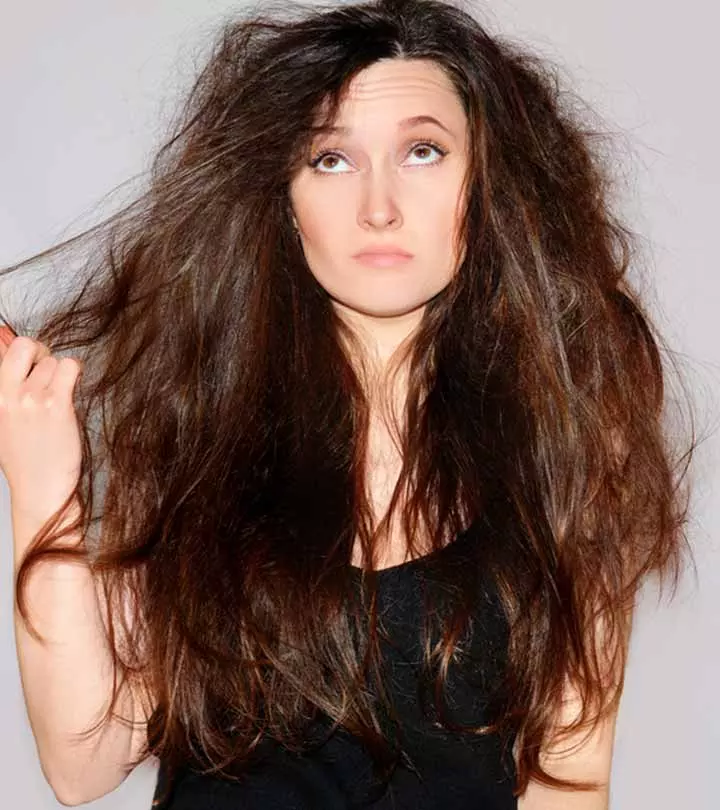
Image: Shutterstock
Reviving damaged hair can be a daunting task. Split ends, tangles, dull and rough hair, frizz, hair loss, and breakage are all the tell-tale signs of damage. Various factors cause hair damage – recurrent use of styling products, heating tools, bad eating habits, chemical treatments, and environmental aggressors. Thankfully, you can repair damaged hair if you take care of your hair. Scroll down to learn about the causes and types of hair damage and how to treat it. Swipe up!
In This Article
What Exactly Is Damaged Hair?
Damaged hair is when the outer hair cuticles are lifted to expose the hair cortex (the inner layer), affecting the hair’s structural integrity.
The hair shaft has three layers: medulla (the innermost part), cortex (the second layer that contains keratin fibers and melanin), and cuticle (the outer layer composed of dead, overlapping cells).
In healthy hair, the cuticles are flat, sealing moisture and protecting the inner layers to keep the hair shiny and smooth. Excessive chemical and color treatments, harsh products and grooming methods, exposure to UV rays, and pollution separate the cuticles, changing the hair texture. As a result, the hair looks frizzy, unmanageable, and damaged and becomes breakage-prone.
 Quick Tip
Quick TipBefore you start treating and repairing damaged hair, it is essential to identify the type of hair damage you have.
Key Takeaways
- Damaged hair means dealing with split ends, frizz, breakage, dull and brittle hair, rough and coarse texture, and tangles and knots.
- Many factors cause hair damage, such as heating tools, environmental aggressions, chemical and coloring treatments, styling products, and bad eating habits.
- There are many ways you can repair and replenish damaged hair, such as washing your hair to keep it clean, using moisturizing shampoos, massaging your scalp with oil, and more.
- You can also try home remedies using natural ingredients from your pantry to curb hair damage and make your hair healthy and manageable.
- If your hair still remains damaged or worsens, you may need to seek help from a doctor.
What Are The Types Of Hair Damage?
| Types Of Hair Damage | How To Treat Damaged Hair |
| Split Ends The hair ends are split into two or more heads, and the shaft feels rough to touch. It happens when the hair is stripped of its natural oils. |
|
| Color Damage Hair colors may contain hydrogen peroxide (bleaching agent) and ammonia that open the hair cuticles and affect the hair structure. |
|
| Chemical Damage Treatments like permingi A hairstyle created by using heat, chemicals, or other methods to create long-lasting waves, curls, etc. , hair rebondingi A procedure that uses powerful chemicals to smoothen and straighten hair, performed by a licensed cosmetologist at a hair salon. , permanent hair straightening can alter the internal structure of the hair. Excessive processing can leave the hair dry, porous, brittle, and fragile. |
|
| Heat Damage Using heat styling tools (curling or flat irons, blow dryer) can fry your hair as heat opens the cuticles. |
|
| Dull And Dry Hair Hair that lacks moisture has a dry and dull appearance as the cuticles are raised. Nutrient deficiencies and medical conditions can also cause lackluster hair that tends to get tangled easily. |
|
| Thinning or Hair Loss Using harsh products, wrong hair care practices, malnutrition, and medical conditions, such as rapid weight loss or hormonal imbalance, may cause hair shedding and hair loss. |
|
| Environmental Damage Extreme humidity and wind can cause flyaways and frizzy hair. Cold weather may cause static electricity and damage the cuticles and cause frizz. |
|
We all dream of having a healthy mane. However, wrong hair care practices and several other factors may damage our hair. Keep scrolling to find out what exactly is responsible for your damaged hair.
What Are The Common Causes Of Hair Damage?
- Heat Styling
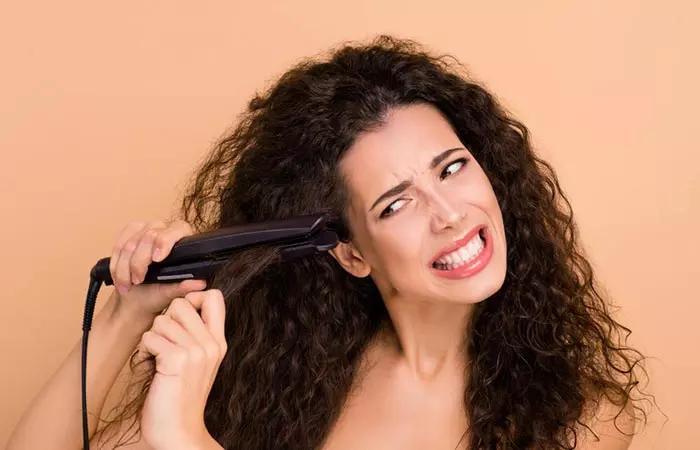
We all are guilty of using blow dryers, hair straighteners, or curling irons at high temperatures to speed up drying and styling time. The excessive heat can raise the hair cuticles and damage their structure. Regular use of heat styling tools can make the hair dry and brittle.
However, this does not mean you have to avoid using heat styling tools altogether. All you need to do is proceed with caution. Follow these tips:
- Use a thermal styler or heat protectant spray before using hot tools.
- Use a deep conditioning repair mask once a week.
- Keep the blow dryer at least 6 inches from the hair.
- Ensure that the heat setting is low.
- Use a diffuseri An add-on to the blow dryer that disperses air to lessen frizz and keep the natural wave pattern from getting tampered. or concentratori A hair dryer attachment that helps to aim the airflow in the desired direction for better drying of specific areas. when needed.
- Stress
Physical and psychological stress may cause hair fall (1). Environmental stressors, such as UV rays, humidity, or pollution, can cause hair loss by releasing free radicals. To prevent hair damage:
- Cover your hair with a scarf or a hat to avoid prolonged UV exposure.
- Go for hair care products with sunscreen.
- Use anti-humidity products.
- Apply a serum to hydrate and protect your hair.
To avoid mental and emotional stress, take help from a therapist, try yoga, meditation, and relaxation techniques. Also, maintain a good daily hair care routine.
- Chemicals
Dry, rough, and brittle hair is often an aftermath of excessive chemical processing. Hair dyes, relaxersi Chemical products, like creams or lotions, used to straighten and manage tight curls or curly hair. , and bleaching agents penetrate the cortex (inner part of the hair) and weaken the hair strands, causing damage from within. They make the hair more permeable to other chemicals, such as formaldehyde or ammonia, further damaging the hair shaft and the scalp. You can avoid this by doing the following:
- Use non-toxic and natural dyes.
- Avoid bleaching or coloring damaged hair.
- Take a break between your hair coloring sessions.
- Use the right concentrations and dilutions.
- Do not sleep overnight with a dye or bleach on your hair.
- Consult a professional for better results and safety.
- pH Balance
Harsh shampoos, conditioners, and other hair care products disrupt the natural pH balance of your head. Always use products that are specially formulated to balance the pH of your hair and scalp.
- Wet Hair

Wet hair is porous and fragile and can be easily damaged. Brushing wet or damp hair can stretch the hair and fracture the shafts.
- Tight Hairstyles
Styling your hair the wrong way can contribute to hair damage. Tight hairstyles like buns and ponytails can pull the hair at the roots, causing hair fall and hair breakage. This may also recede your hairline and cause bald spots.
- Nutritional Deficiency
Nutritional deficiency may cause hair fall and affect hair quality. Consume foods rich in protein, iron, copper, zinc, essential fatty acids, folic acid, amino acids, and vitamins for hair growth and the maintain healthy hair quality (2).
- Fungal Infections
Dandruff is a common fungal infection of the scalp caused by the microbe Malassezia. It feeds on sebum and natural scalp oils and causes irritation and inflammation that may affect hair and scalp health and cause hair loss in the long run. Use anti-dandruff shampoos and consult a doctor for treatment.
- Hair Type And Texture
Thin and fine hair is susceptible to damage. Be gentle when grooming your hair and follow a proper hair care routine to keep it healthy.
- Bad Hair Care Practices
From taking hot showers to sleeping with damp hair, we put our hair through a lot of stress. These habits can damage your hair. Always avoid
- Taking hot showers
- Over-washing your hair
- Aggressively massaging or brushing
- Sleeping or tying damp hair
- Sleeping with the hair down
Damaged hair is fragile. Hence, it needs more care. A dedicated hair care routine will help you fix it. Here are a few ways you can repair or restore your hair health.
A wide range of factors contribute to damaged hair. But how do you know if it is damaged in the first place? Find out in the next section.
How Do You Know If Your Hair Is Damaged?
You can tell if your hair is damaged by looking out for the following signs:
- Hair strands break easily
- Hair is thick at the top but thin towards the ends
- Frizzy hair
- Dull or severely dry hair
- Excessively tangled hair
- Patches of short hair due to over-bleaching or toning
Rach Wat, a beauty blogger, recounted her struggles with damaged hair. In her blog, she wrote, “Other than the white hair snapping, I began to get really bad split ends, color still doesn’t stay properly in my hair, and the split ends make hair more difficult to style as my hair just doesn’t want to behave (i).”
If you notice these signs, it is time to give your hair some TLC. Check out the next section for some simple ways to restore your hair health and vitality.
How Do You Treat Damaged Hair?
- Wash your hair twice or thrice a week to keep it clean and free of dead skin cells, dirt, excess sebum, and dandruff.
- Use glycerin-based shampoos and conditioners.
- Go for deep conditioning treatments like using a good hair mask once a week.
- Apply detanglers, serums, and leave-in conditioners. These products offer multiple benefits like oil control, imparting shine, and smoothing the hair. They also protect your hair from damage and tame frizz.
- Massage your scalp with moisturizing oils once a week. It boosts circulation, stimulates hair growth, and improves hair thickness.
- Get regular haircuts. This removes split ends and protects your hair from further damage.
- Avoid products that contain sulfates, parabens, alcohol, synthetic dyes, and fragrances.
You can also try home remedies to keep your hair healthy. Home-made hair masks with simple ingredients are widely used to nourish the hair and keep it hydrated. Check out some popular home remedies in the next section.
Home Remedies For Repairing Dry And Damaged Hair
1. Avocado And Egg Mask
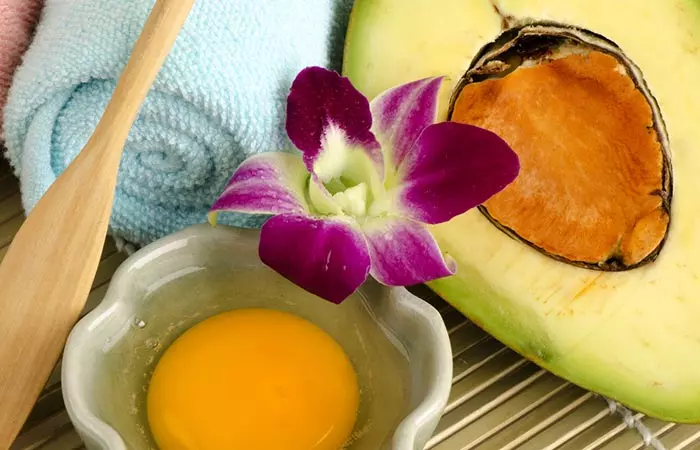
Research shows that the peptidesi Short chains of amino acids (usually 2 to 50) connected by chemical bonds that occur naturally in human tissues. in the egg yolk promote hair growth (3). Avocado is widely used as a home remedy to soften the hair.
You Will Need
- 1 small and ripe avocado
- 1-2 eggs (depending on your hair length and thickness)
Process
- Mash the ripe avocado and mix it with the egg(s).
- Apply this mixture to your hair and scalp.
- Leave it for 20 minutes.
- Wash with a gentle shampoo.
2. Banana And Yogurt Hair Mask
Olive extracts (including oil) can stimulate hair growth (4). Anecdotal evidence claims that bananas and yogurt are excellent hair moisturizers.
You Will Need
- 1 ripe banana
- 1 tablespoon of olive oil
- 2-3 tablespoons of yogurt
Process
- Mash the banana and mix it with olive oil and yogurt.
- Apply this mixture to your hair and scalp and leave it on for 20 minutes.
- Wash with a gentle shampoo.
3. Flaxseed Gel Serum
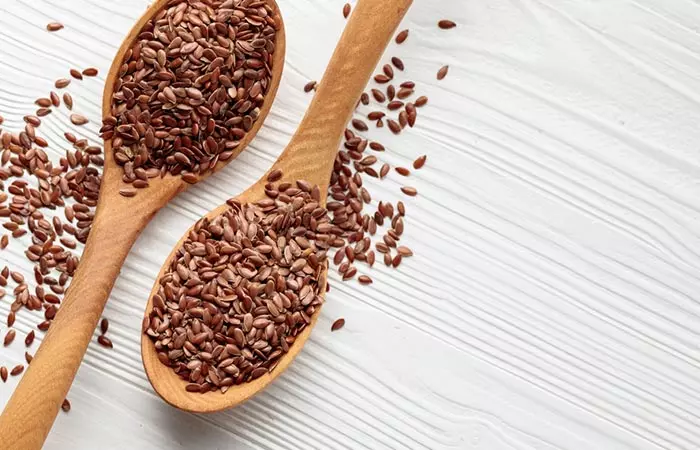
This is a popular DIY remedy and is said to keep the hair hydrated.
You Will Need
- 2 teaspoons of flaxseed
- 250 ml of water
- Muslin cloth
Process
- Boil the flaxseeds in water for 4-5 minutes.
- Remove it from the heat when the consistency of the mixture thickens.
- Filter the mixture using a muslin cloth.
- Apply it as a hair serum.
 Quick Tip
Quick Tip4. Honey And Olive Oil Mask
Honey is a natural emollient, meaning it helps lock in moisture, providing deep conditioning and adding shine to your hair (5). It’s especially beneficial for those with dry hair. Additionally, honey’s antioxidants help minimize dandruff and promote a healthy scalp, which may keep your hair healthy (6). Olive oil complements honey by sealing moisture into the hair shaft, which prevents dryness and makes hair easier to manage (7).
You Will Need
- 2 tablespoons of honey
- 1 tablespoon of olive oil
Process
- Mix the honey and olive oil until well blended.
- Apply the mixture to damp hair, focusing on the dry ends.
- Leave the mask on for 30 minutes.
- Rinse thoroughly with warm water.
- Follow with your usual shampoo and conditioner routine.
Other than these, you can also use olive, argan, sweet almond, and coconut oils for prewash. Massage the hair and scalp well with any of the oils and wash it off after 2-3 hours. These oils aid hair restoration and strengthen dry and damaged hair strands. They tame frizz and flyaways and boost hair repair.
Home remedies are a great option, but for more intensive hair treatment for damaged hair, it is a good idea to visit a salon. Go for special hair treatments (keratin) or hair spas occasionally to pamper and treat your damaged hair professionally. However, if you do not see any progress, consult a doctor.
When To See A Doctor
It is advisable to consult a dermatologist if you notice:
- Excessive hair fall
- Dry, dull hair accompanied by fatigue and weight loss
- Sudden thinning of hair or discoloration
- Burning sensation on your scalp
- Itchiness, redness, or scalp irritation
Infographic: Hair Oils For Damaged Hair
Multiple factors such as tight hairstyles, stress, poor eating habits, and bad hair care practices can cause damage to your hair. Following simple tips such as massaging your scalp with your favorite hair oil once a week can stimulate blood circulation and improve your hair health.
Check out the infographic below to know more!
Some thing wrong with infographic shortcode. please verify shortcode syntax
When the outer hair cuticles are lifted, exposing the cortex, it means you have damaged hair. Damaged hair has weaker structural integrity. Excessive coloring, chemical and heating treatments and tools, improper hair care practices, and exposure to UV rays, pollution, and dirt leave your hair weak and damaged. Your hair becomes frizzy, breakage-prone, dry, and unmanageable. Depending on the type of damage, there are different ways to treat and rejuvenate your hair strands. Practicing regular hair care techniques, such as massaging your scalp and using the right hair care products, repair damaged hair and make it healthy.
Frequently Asked Questions
How long does it take to repair damaged hair?
About 6 months to a year. According to anecdotal evidence, using correct hair care techniques and specialized nourishing hair care products may help repair damaged hair effectively.
Does damaged hair grow slower?
Possibly. Anecdotal evidence indicates that damaged hair, or hair prone to breakage, may grow slowly.
What happens if you don’t cut damaged hair?
Anecdotal evidence suggests damaged hair, if left uncut, may lead to split ends and fraysi Hair strands that are dry and damaged especially towards the end and prone to split ends due to heat and chemical exposure. and may appear thinner.
Will damaged hair grow back healthy?
Yes. If you allow your hair to recover without the use of chemicals and heat styling tools and nourish it with the right products and techniques, it will be able to repair itself.
Learn how to repair damaged hair with natural remedies. Watch this video to discover simple and effective tips to restore your hair’s health and shine.
Personal Experience: Source
StyleCraze's articles are interwoven with authentic personal narratives that provide depth and resonance to our content. Below are the sources of the personal accounts referenced in this article.
i. My Hair Story – How I damaged my hairhttps://rachwat.wordpress.com/2014/07/25/my-hair-story-how-i-damaged-my-hair/
References
Articles on StyleCraze are backed by verified information from peer-reviewed and academic research papers, reputed organizations, research institutions, and medical associations to ensure accuracy and relevance. Read our editorial policy to learn more.
- Hair and stress: A pilot study of hair and cytokine balance alteration in healthy young women under major exam stress
https://www.ncbi.nlm.nih.gov/pmc/articles/PMC5397031/ - Diet and hair loss: effects of nutrient deficiency and supplement use
https://www.ncbi.nlm.nih.gov/pmc/articles/PMC5315033/ - Naturally Occurring Hair Growth Peptide: Water-Soluble Chicken Egg Yolk Peptides Stimulate Hair Growth Through Induction of Vascular Endothelial Growth Factor Production
https://pubmed.ncbi.nlm.nih.gov/29583066/ - Topical Application of Oleuropein Induces Anagen Hair Growth in Telogen Mouse Skin
https://journals.plos.org/plosone/article?id=10.1371/journal.pone.0129578 - Honey in dermatology and skin care: a review
https://pubmed.ncbi.nlm.nih.gov/24305429/ - Therapeutic and prophylactic effects of crude honey on chronic seborrheic dermatitis and dandruff
https://pubmed.ncbi.nlm.nih.gov/11485891/ - Ethnopharmacological survey of home remedies used for treatment of hair and scalp and their methods of preparation in the West Bank-Palestine
https://www.ncbi.nlm.nih.gov/pmc/articles/PMC5499037/
Read full bio of Robert Finney
Read full bio of Annie Jangam
Read full bio of Eshna Das
Read full bio of Swathi E





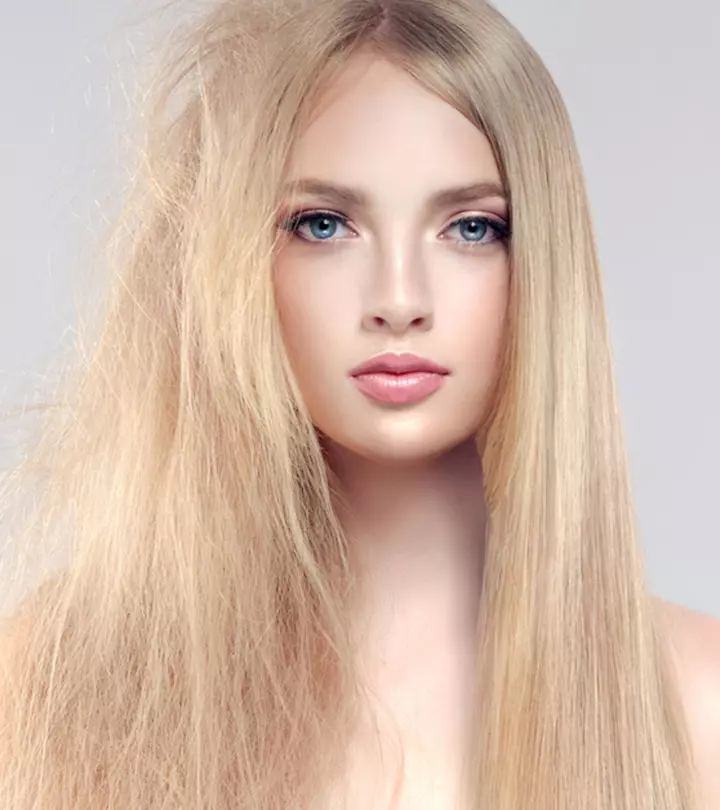
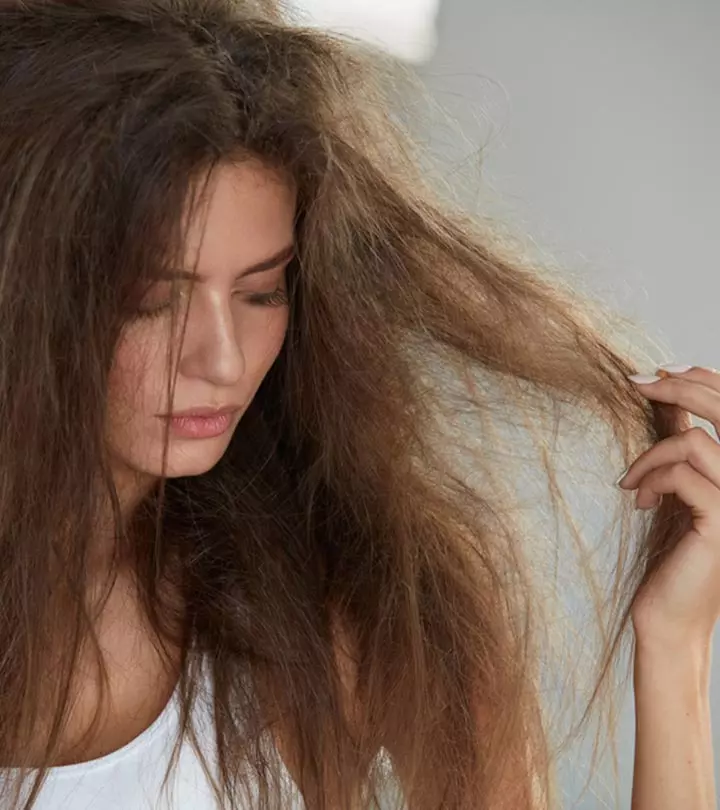



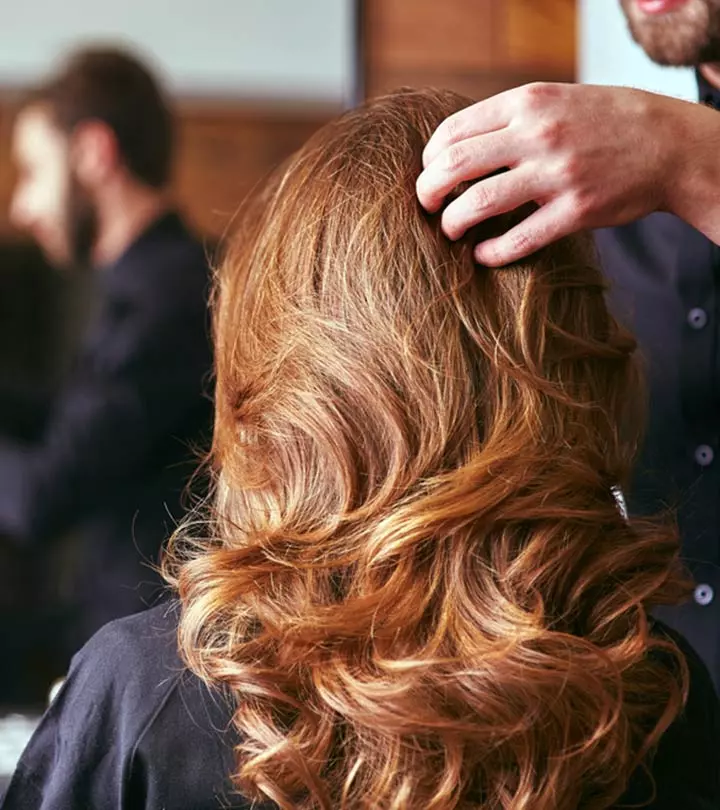

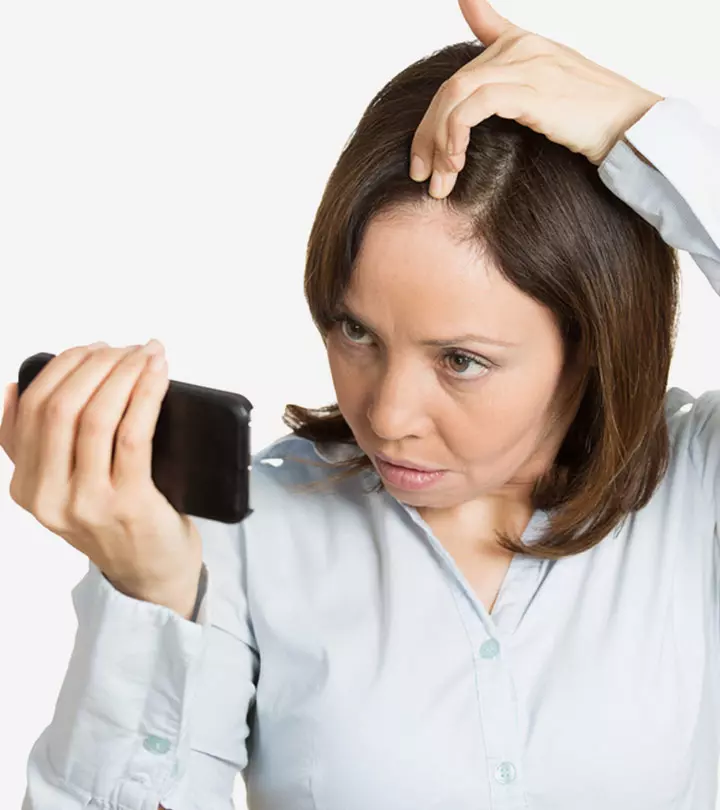
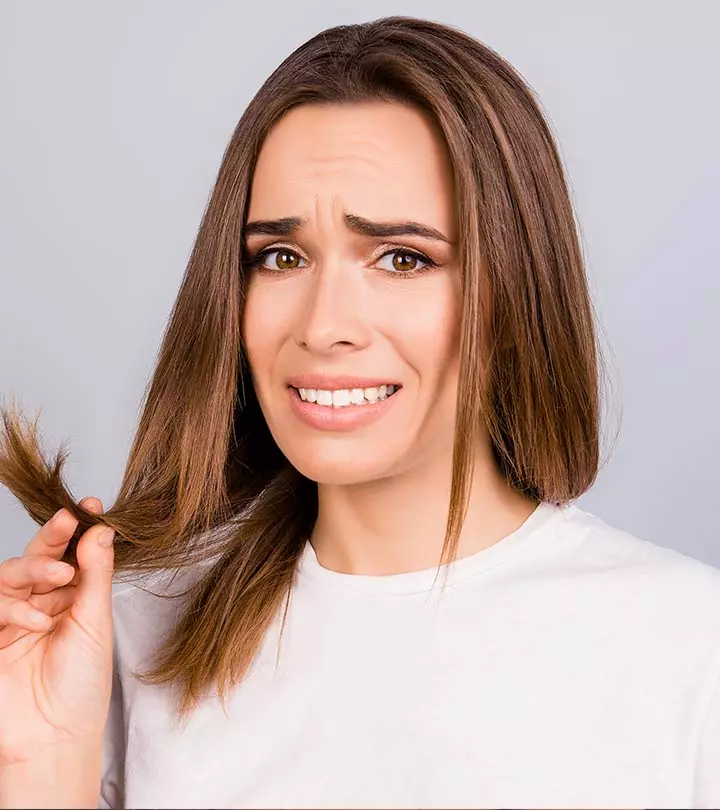


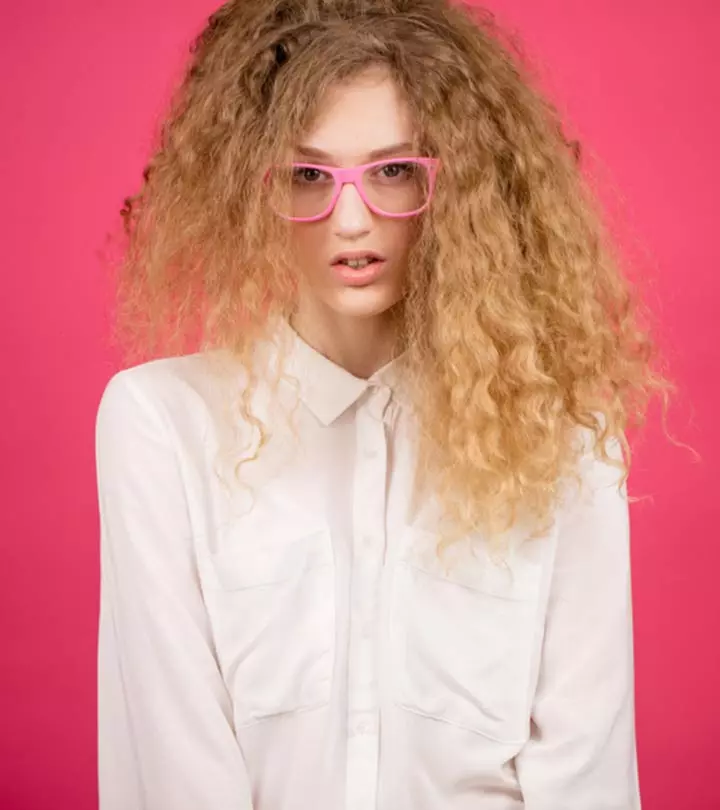

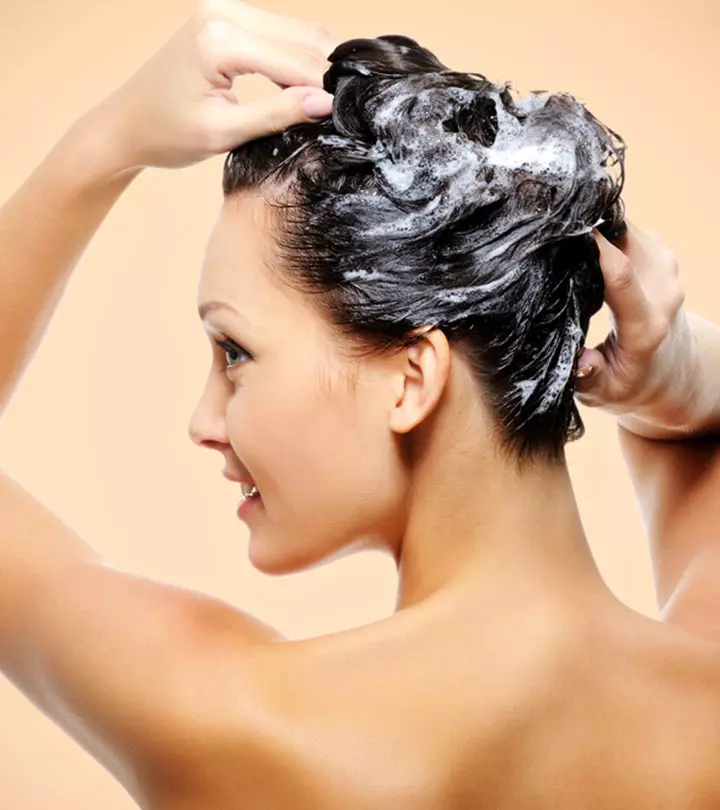






Community Experiences
Join the conversation and become a part of our empowering community! Share your stories, experiences, and insights to connect with other beauty, lifestyle, and health enthusiasts.